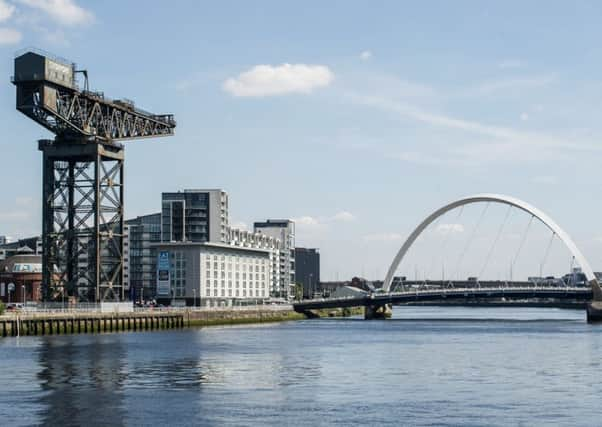Inside Transport: Get passengers back on to the Clyde


A century ago, passenger ships had to squeeze past each other to navigate the congested River Clyde in Glasgow. Today, what was once among the world’s most important waterways is all but empty of traffic. Despite significant development along its banks, including major visitor attractions and several new bridges, there are no river buses and virtually no passenger boats plying the Clyde.
Their absence was underlined for me in a series of walking and cycle tours along the river last week as part of the city’s Doors Open Day heritage festival.
Advertisement
Hide AdAdvertisement
Hide AdA guided walk by the Institution of Civil Engineers about the Clyde’s bridges highlighted how these magnificent structures now cross a largely empty river. This is despite historic crossings, such as the South Portland Street suspension footbridge, a busy route to the city’s sheriff court, being joined by the “Squinty” and “Squiggly” bridges, with another planned downstream in Renfrew.
A cycle excursion round Glasgow’s former docklands by Hidden Heritage Tours showed that, despite major regeneration of the quaysides, the Clyde has become little more than an aquatic abyss between them.
Our guide also pointed out that, despite the handsome overhaul of the Broomielaw in the so-called international financial services district, the riverside walkways remain bereft of cafes or restaurants, in stark contrast to other city waterfronts like Melbourne.
What were once shipyards and docks are now leisure playgrounds, from the cinema and restaurants of Springfield Quay to the Scottish Exhibition and Conference Centre (SECC) and Hydro, which has quickly become one of the world’s busiest live entertainment venues.
The Glasgow Science Centre and IMAX Cinema have been joined by the Riverside Museum, with a whisky centre and distillery to open next year in the former Queen’s Dock pumping station beside the Clydeside Expressway.
Further downstream, the Titan crane in the former John Brown’s shipyard in Clydebank has also been restored as a tourist attraction.
Glasgow City Council has installed a series of free-to-use pontoons – floating landing stages – in the hope of attracting more river vessels.
There was a river bus which operated a few years ago between the city centre and the Braehead shopping centre, but it did not last long.
Advertisement
Hide AdAdvertisement
Hide AdBut now things might be about to change. Two power boat operators, engaged in “friendly” competition, are developing regular services, albeit in craft for just 12 people.
Seaforce, based near the SECC, and Pacific Quay Powerboats, on the opposite bank, offer a range of trips, including into the city centre and out to Braehead.
Night-time cruises under the Clyde’s floodlit bridges are being added plus an “Arrive Like Bond” jaunts to a casino in the city centre.
The Pacific Quay operator, launched only two months ago, has big expansion plans, such as a seafood takeaway and ticket office at its base beside BBC Scotland’s headquarters.
Building the business could lead to the acquisition of larger boats. After all, a rigid inflatable is not for everyone, even in the sunshine.
All along the river, things are happening. Now it’s the river itself which should be the focus of further development efforts.
It’s a potentially greener, and for many, novel form of transport – which could also offer a very different perspective on the city.